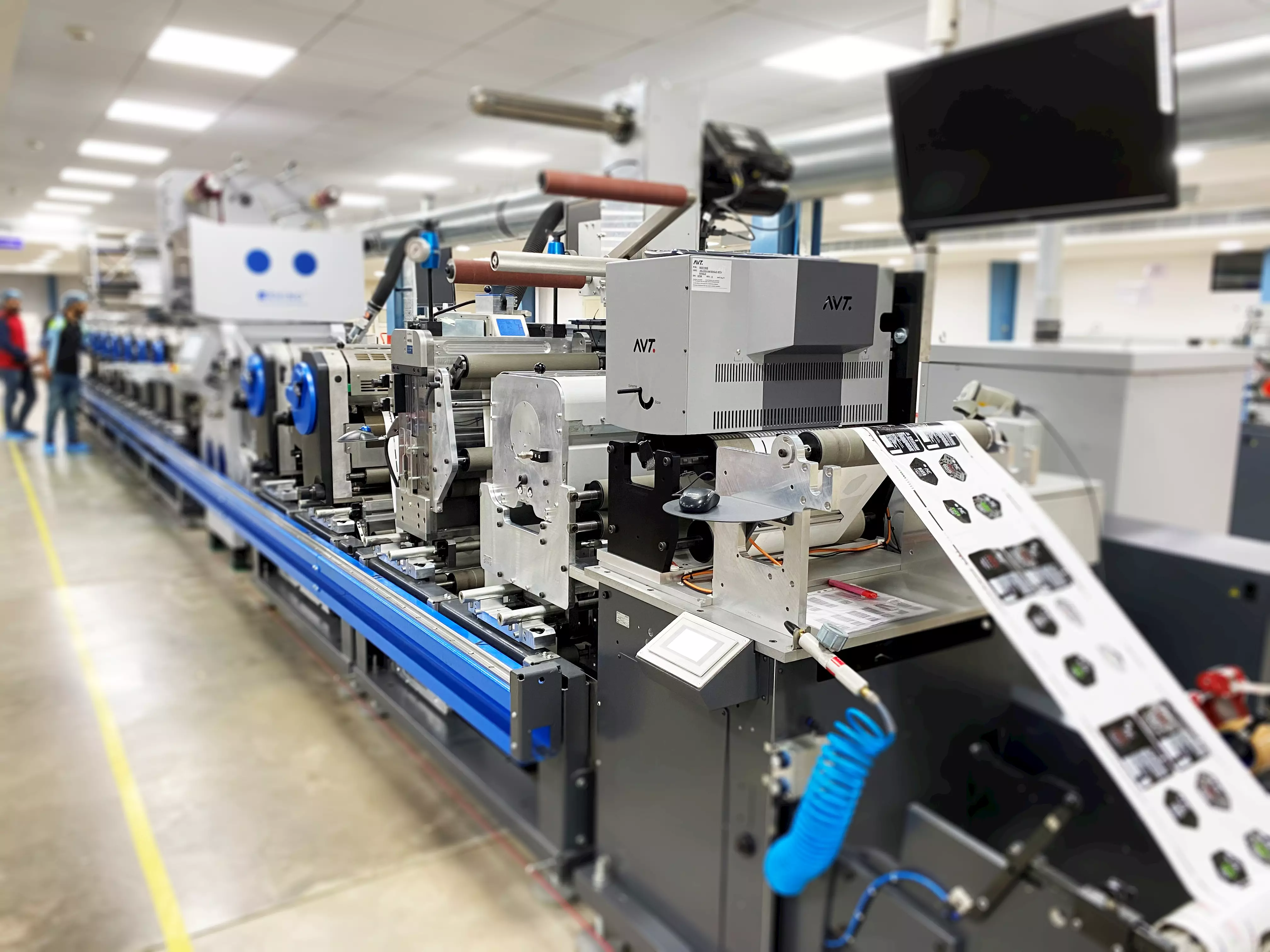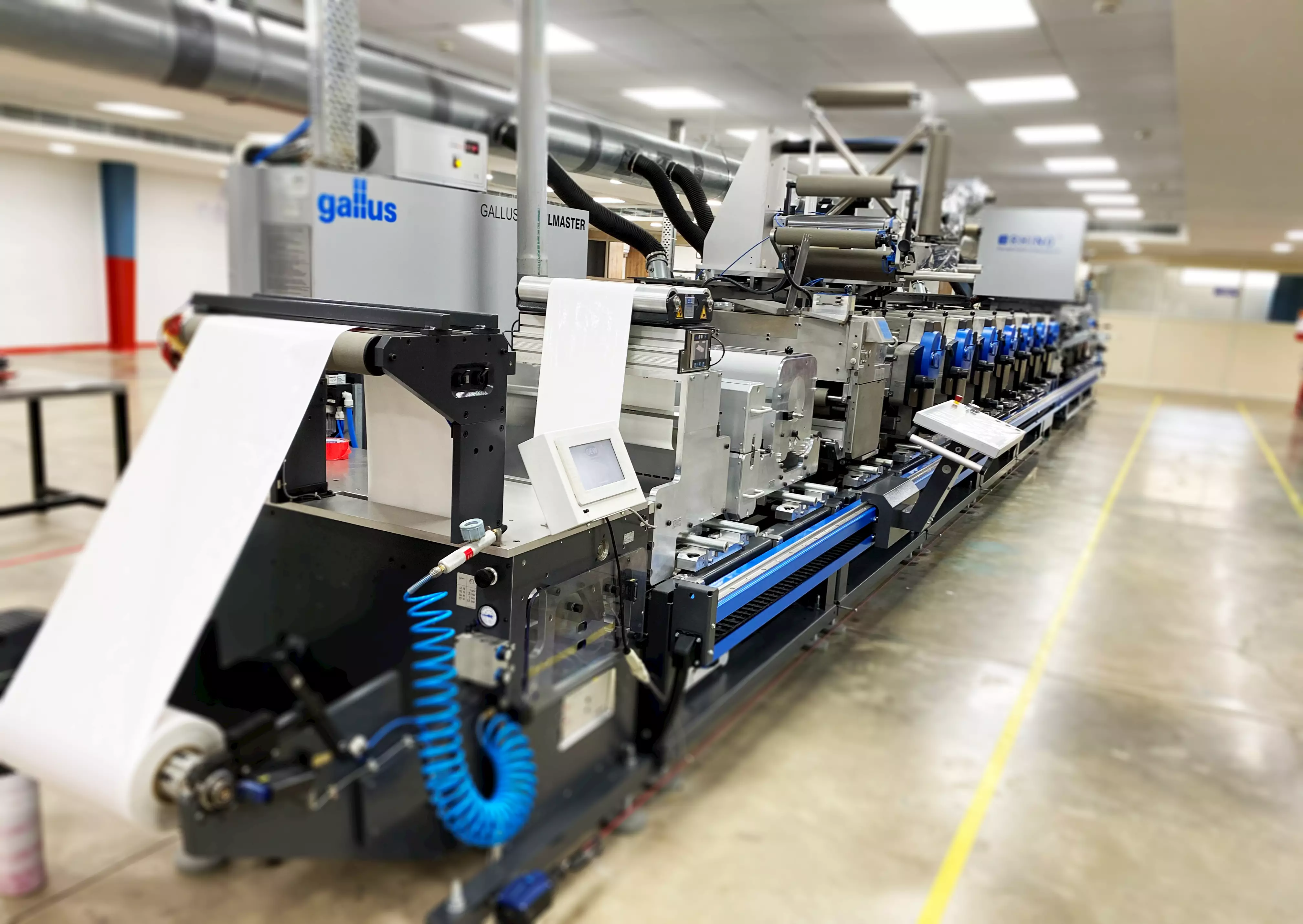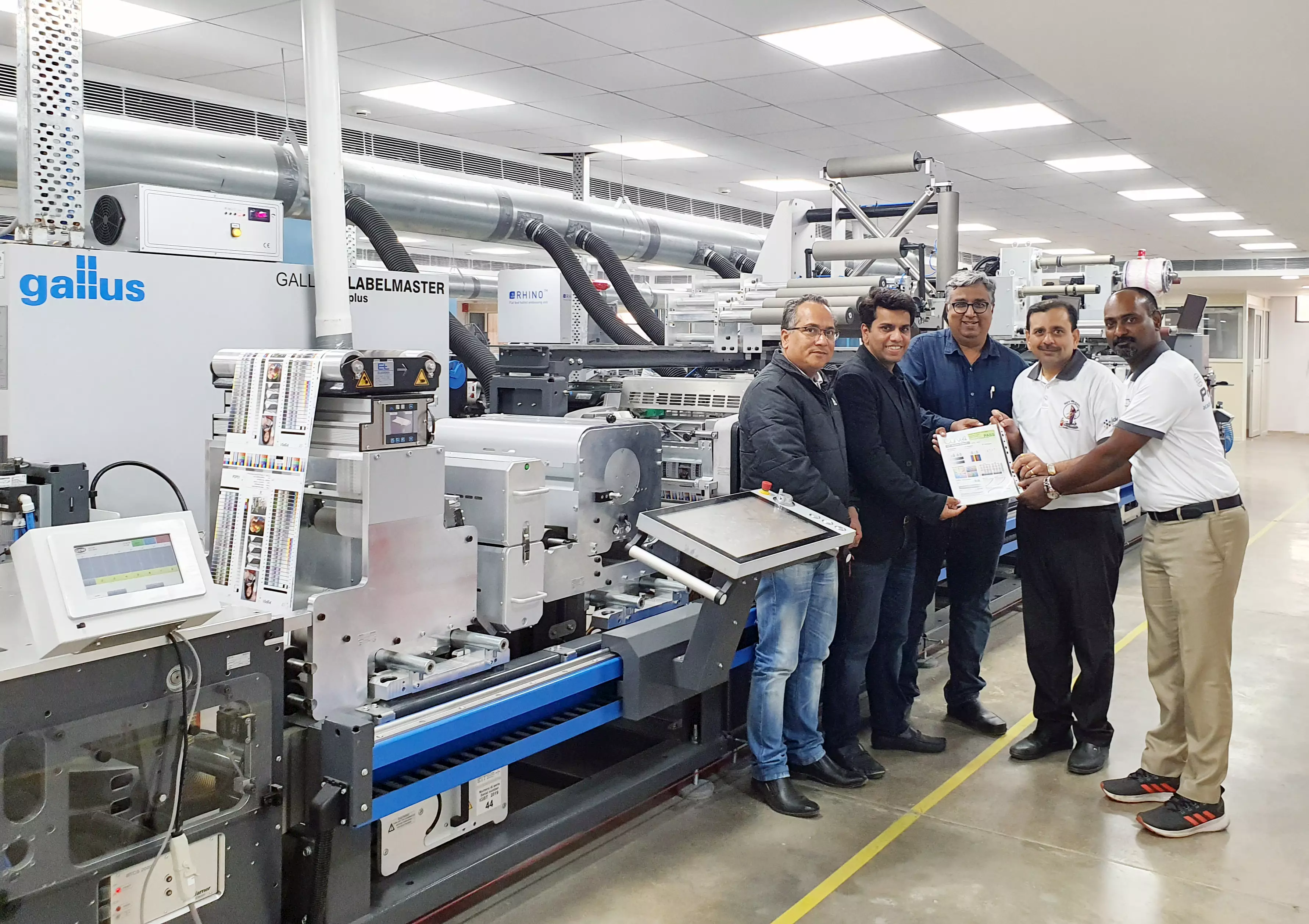Marks’ standardisation with G7 ensures customer satisfaction and business success - The Noel D'Cunha Sunday Column
Companies need to make their systems more resilient. Here’s how Marks Emballage did it
Read on...
30 Aug 2020 | By Noel D'Cunha
The one thing common among companies, which have been successful in India is the relentless search for solutions that help increase consistent quality, reduce cost, and more importantly meet customer needs.
Baddi-based Marks Emballage, a Marks Group company, is a new kid on the block, but the idea of how the successful companies have achieved what they have, is not lost. “Not only Print CEO’s, but every successful CEO is also talking about customer-centricity. Jack Ma (founder, Alibaba) says - forget about your competitors, just focus on your customers. The concept is not new but the approach is new,” says Aaditya Kashyap, managing director at Marks Emballage.
In 2018, Marks became the first Indian packaging company to order two Gallus Labelmasterflexo presses at a time, rounding off the investment with a Pantec Rhino II and a Prati Kit. The new investment made them stand out in both capabilities and capacities in the label industry.
Kashyap says, we live and breathe product innovation. “We are working on some of the cutting-edge technology on labels. We have partnered with technology leaders to introduce attractive embellishment and strong brand security solutions using registered hologram and lens insertion, software solutions with the track-and-trace feature using blockchain, and promotional tools such as augmented reality and virtual reality (AR and VR) for brand engagement.”
An India first
Customer satisfaction is more important today than ever before. What does a brand need? One, consistency in colour reproduction of its brand colours first time, every time. The questions that a label converter has to ask is: one, what will ensure the delivery of consistency, and two, will achieving the right colour make our customers happy?
The positive outcome of this took Marks to implement Idealliance G7 certification, the first UV flexo facility in India to achieve G7 Master Facility certification on 25 January 2020. The certification process includes training, examination and qualification process of their print production processes, and validating their capabilities to the highest level of global industry standards and specifications.
For Marks, colour management is at the heart of a print company’s customer experience, says Kashyap. “Imagine a label printer with the best in class equipment, printing a different shade of red every time they print a Coke label. This will be suicidal. We were very clear on this, and this is why we have certified for Idealliance G7 Master Facility. This is to ensure accurate and consistent colour reproduction first time and every time.”
Marks recently did a handwash label job for a leading FMCG company. There were a total of three variants and three sizes making a total of nine SKUs. There was a main graphic element in CMYK for each variant to be matched across all the sizes. This job, which is typically a nightmare for a printer to get it the right first time and every time, became a smooth flow for us after G7 standardisation. “We printed all the CMYK graphic elements to the neutral grey balance and got it right the first time.

There is no way we can go wrong in this approach and fear brand rejections at any time. What could easily have taken 45 mins to an hour and hundreds of meters of the substrate to get it right without G7 for each SKU, we could achieve that in less than 50% of time and material.
Besides, the colour accuracy and consistency, Marks made a vital investment for security printing for pharma jobs, when it integrated the 10-colour Labelmaster with Pantec Rhino II print decoration kit.
Chandrakant Gadhia, vice president for operations at Marks, and a key driver of the company’s operations says, “The pharma space is seeing two changes – one is going the over-the-counter (OTC) route, which is cosmetic, allowing as much decoration on the packaging as possible. And second is security. Today security for pharma means providing vanilla holography, which is replicable by any vendor. Unless you bring in some specialised multi-foil, and add in a micro-emboss somewhere, you are not presenting any viable solution to the brand owners.
You use the power of technology to produce that special value-add where security is concerned. With the Gallus and Pantec combo, we have a unique strength for cosmetic, personal care, FMCG, as well as wine and spirit labels too, thus giving us a platform to venture into jobs beyond pharma.”

The steps to standard certification
Learning to run in a continuous improvement marathon is akin to a toddler learning to walk. Standardising process is the fundamental step to a lifelong improvement journey.
Marks’ production team under the guidance of its head, Amiya Choudhury ensured complete site readiness. The calibration was done by G7 experts, Akshay Joshi, professor, printing engineering department, PVG’s College of Engineering and Technology, Pune, and Panthala Selvan, managing director, Idealliance South Asia. Siegwerk India contributed towards technical support for UV inks.
The G7 qualification was passed in one run. “This is a rare occurrence and has happened for the first time in India,” says Joshi, according to whom, G7 is a revolutionary technology which is a concoction of process standardisation, press calibration, repeatability and optimum quality.
He says, “In my opinion, it also symbolises education by imparting curiosity among the print community.”
G7, in simple terms, is a calibration methodology, which brings the system to work on the same metrics and eventually ensures consistency. The word G7 implies a grey and the seven colours namely cyan, magenta, yellow, black, red, green and blue. It is a global standard, which makes colour matching relatively easier. The reason for G7 being widely acclaimed is its pliability because it is independent of substrates, inks, press and environmental conditions used while printing.
Joshi says, “It takes into consideration the colour of the substrate to provide the closest colour match. The key parameters of G7, that is, grey balance and tonality help achieve shared neutral appearance between printed samples irrespective of presses, plants and location.”
Process for business sustainability
In the Indian scenario, print firms which prefer colour managed workflow are those who print for international print buyers or those who cater to premium jobs where colour accuracy is important.
Kashyap agrees. “Today, only a handful of Indian print firms have a colour managed workflow. This is also primarily driven by their customers rather than an internal need. Of course, there are some very brilliant print companies with great quality printing, too.”
But catering to the customers’ demand for colour consistency is one part of the story. What a good process control, which can achieve a predictable result every time, can do to the business, is another. “The outcome can be easily forecasted regardless of press, substrate, colourants, and screening technology among others. Furthermore, the productivity and efficiency of the printing machine will increase, thereby increasing the profitability of an organisation,” explains Kashyap.
Generally, all print firms need to understand that the only way to compete and survive in this low margin business is by increasing efficiency, lowering wastage and delivering consistent results at the lowest cost. And to achieve this, standardisation is the only and only way. “Also today even small local brands need to compete with global brands on the retail shelves and they cannot afford to have inconsistent colours on their packaging.”
As the process becomes stable and predictable post G7, the uncertainty of proof matching to the sample is greatly reduced. It allows print providers to deliver a high-quality job without hesitation. “The makeready time and the wastage of consumables are exponentially reduced as well because the struggle for matching the colour is eradicated,” adds Kashyap.
G7 implementation challenge
Establishing a quality culture is always a painful journey for any organisation. The biggest challenge is to ‘unlearn’ old habits and develop new ones.
"Yes, G7 is new to all of us at Marks," echoes Kashya. “But we have been very clear from day one that we shall have the most modern infrastructure and the best technically competent team and a quality culture, which shall be at par with any of the world’s leading label print companies.”
As a result, the Marks team is constantly working on this with continuous engagement with the team and have developed internal training programmes and activities. Kashyap says, “Now the next step is to introduce quality and performance-linked incentives for all team members to motivate them further. We firmly believe that a good culture in a company is always work in progress. We need to work on it every day.”
Learning in a crisis
We are in the midst of a disruption that is unprecedented in our lifetime. However, contrary to the general belief about slowdown in business, Kashyap says, his company actually took this crisis time as an opportunity to press on the accelerator.
He says, “Our take on this was – how can we be faster to respond to new demands in the market before our competition.”
This crisis came as a boon in disguise for Marks, however, it also meant fulfilling a sudden spike in for hygiene and sanitizer products even with a very lean team. “We delivered millions of labels overnight to almost all major big brands in the country during the lockdown and won their hearts,” says Kashyap.
Kashyap says, “Here, we were fortunate that from day one our investment has been focussed towards high automation equipment and standardisation so that we can operate with minimum manpower.”
Marks mantra is: Achieve long-term vision with a short-term focus. Kashyap says, “When conquering a mountain, it’s better to focus on your steps, once the target for the summit is set. We think this is the only way to always be relevant and on track for your long-term goals.”
He sums up, “The technology and consumers are evolving daily. So business has to be dynamic and responding to these changes in time to survive and thrive and yet work to achieve long term business goals.”
Aaditya Kashyap on Marks’ G7 Master Facility certification

The first step to become a G7 Master Facility qualified?
We were in continuous touch with Akshay Joshi, G7 expert consultant and discussed on implementation of G7 Master Facility at our plant. Joshi and Panthala Selvan, managing director, Idealliance, South Asia executed the trials to match the global print specifications for the attainment of G7 Master Facility. Dr Joshi also trained our employees on the critical factors to be tightly monitored on label press so as to maintain the print consistency.
Different compliance levels for the G7 qualifications?
The G7 Master qualification consists of three compliances - G7 Grayscale, G7 Targeted and G7 Colorspace. The Colorspace is a top tier.
Recalibrating print workflow?
Every job that comes out of the machine has to be checked for the specifications.
G7 certification validity and renewal process?
G7 certification is valid for a year. For renewal, the test chart needs to be reprinted and assessed under the supervision of a G7 expert.

Productivity before and after G7 qualification?
We have just started on our journey. We can easily see very good gains in colour consistency which is the main outcome for G7. Our customer complaints due to colour issues have come to Zero – A performance metric we track religiously. This has resulted in winning customer confidence within a short time. For productivity improvement, we can see that our makeready time is reduced by almost 30% bringing tremendous time saving and efficiency gains. Also, this translates to significant material savings.
G7 for flexo process. In future, how are you equipped to adapt the G7 process for other printing processes, for example, digital?
Having implemented the G7 calibration for the flexo process, we’ve gained some experience and insights on the practical issues. The principle for G7 is the same for all printing processes including digital. The G7 calibration for digital should be relatively easier and less time consuming as it has fewer variables to be monitored.














 See All
See All